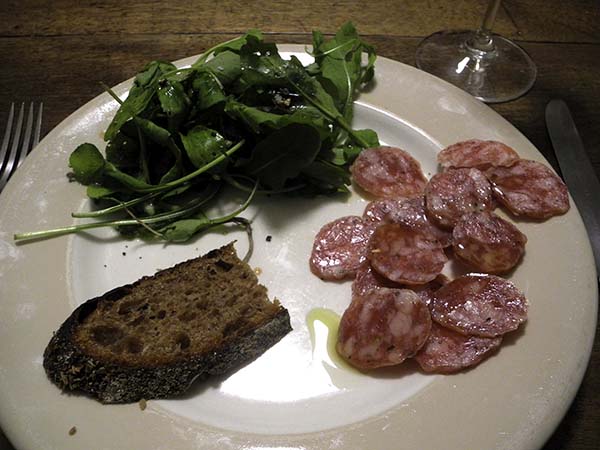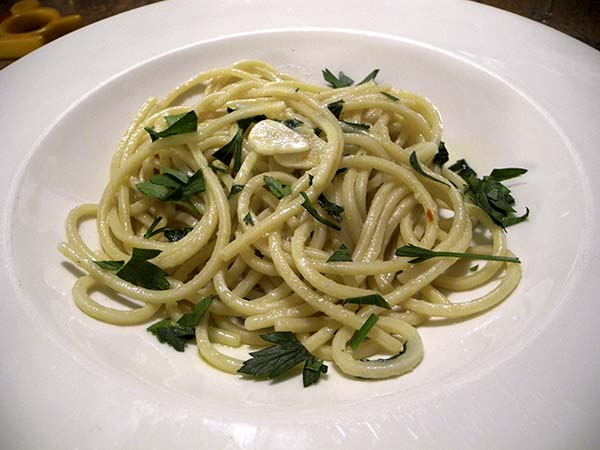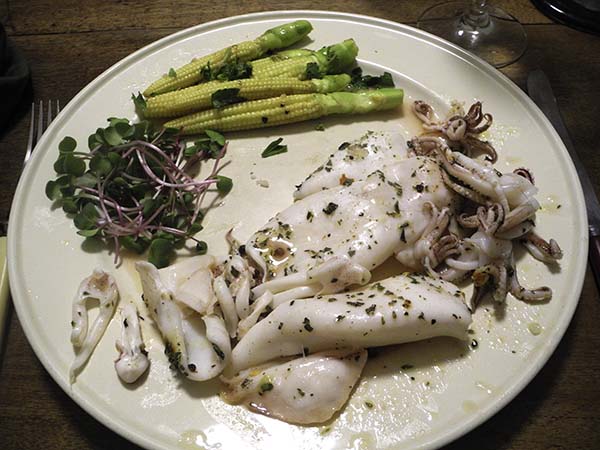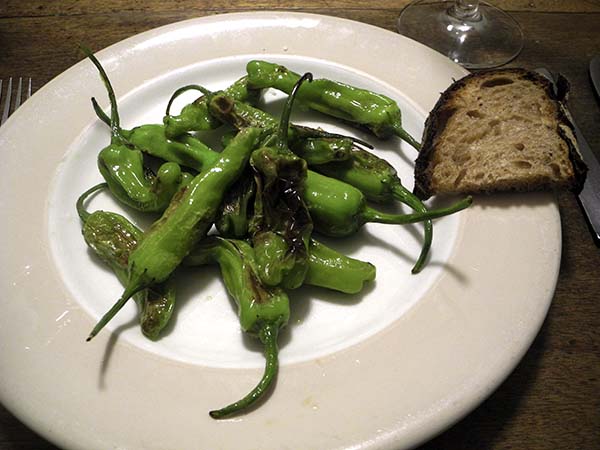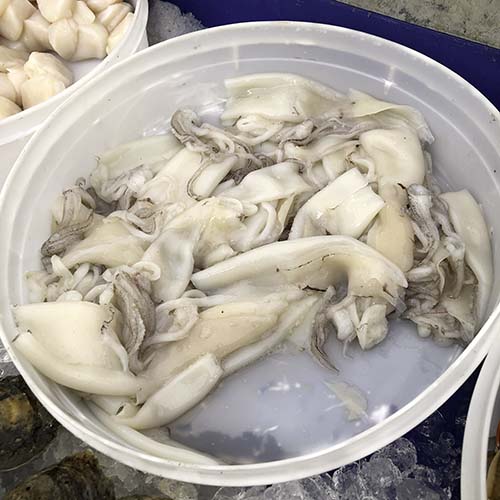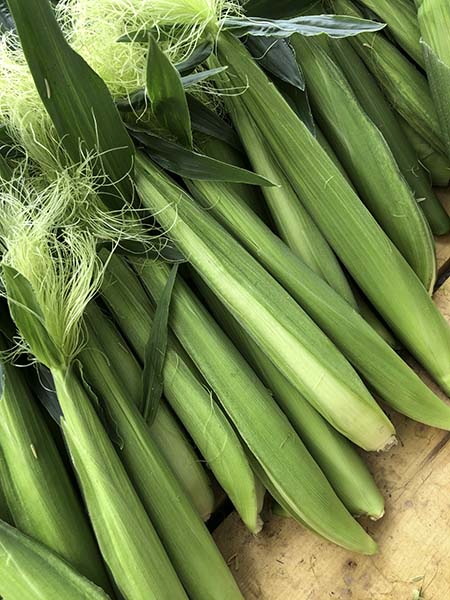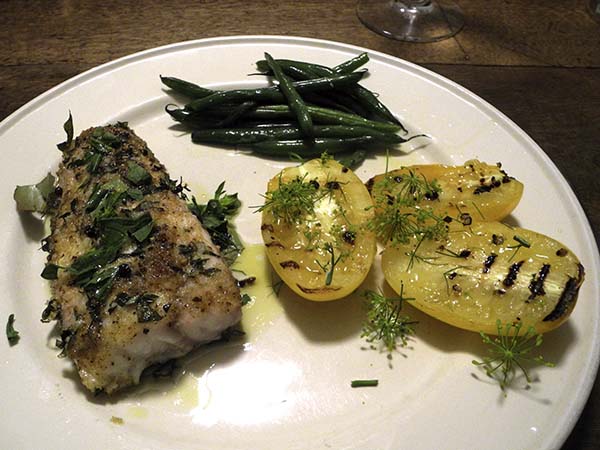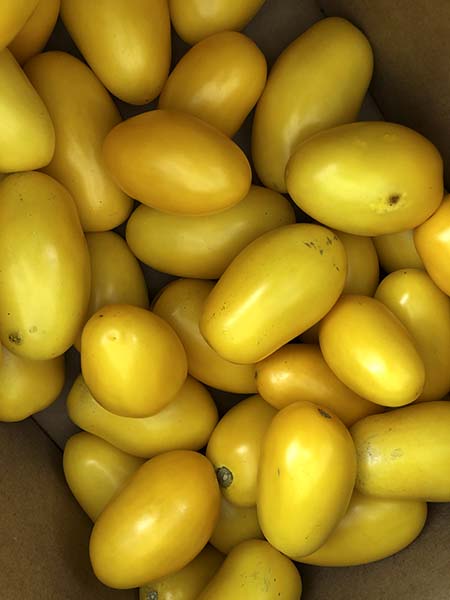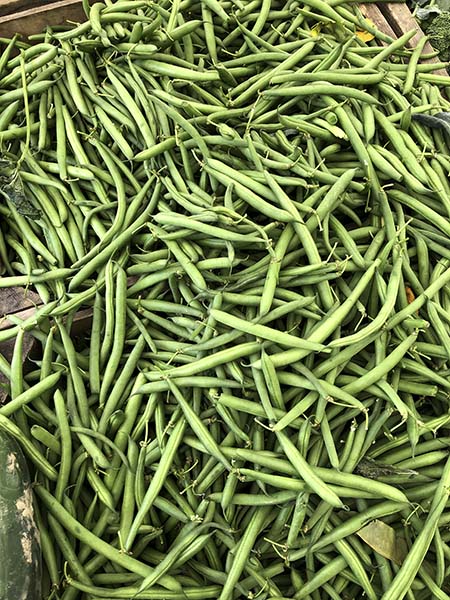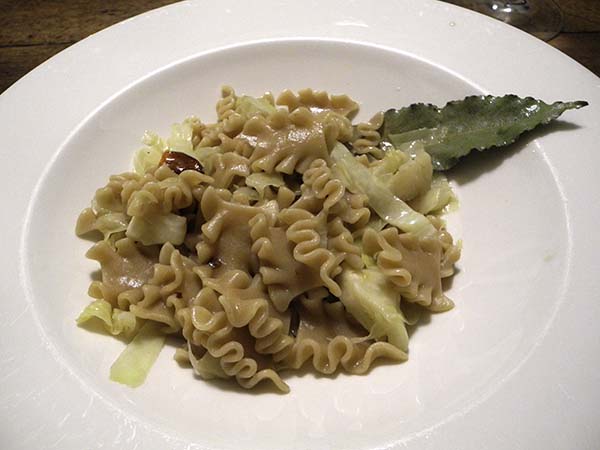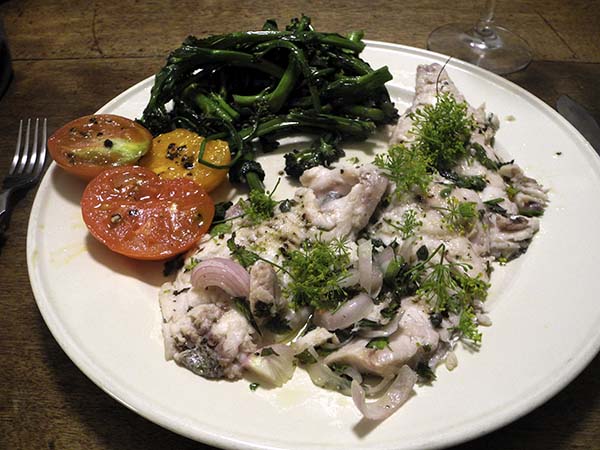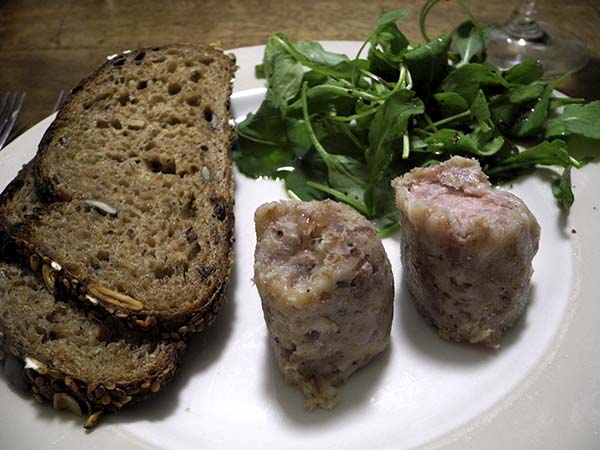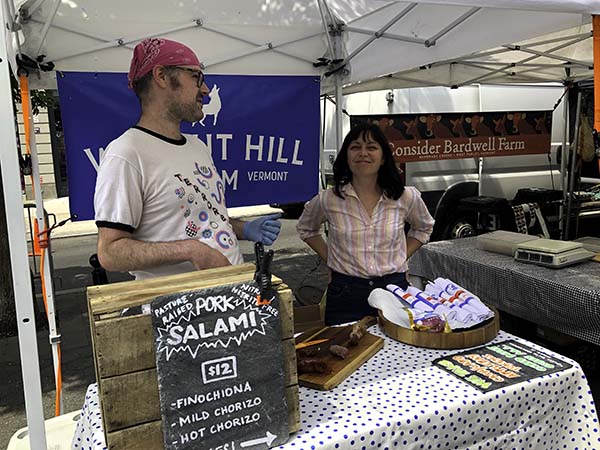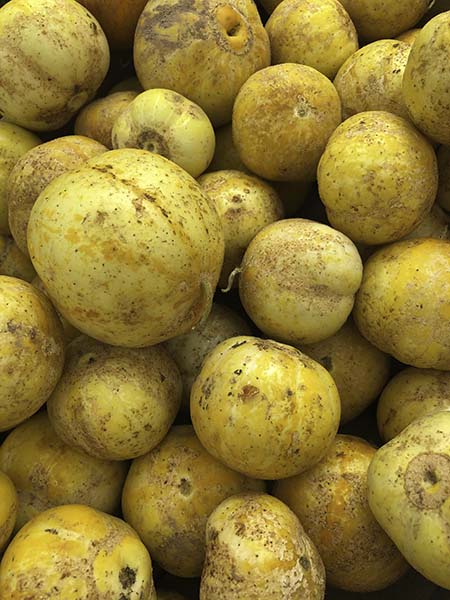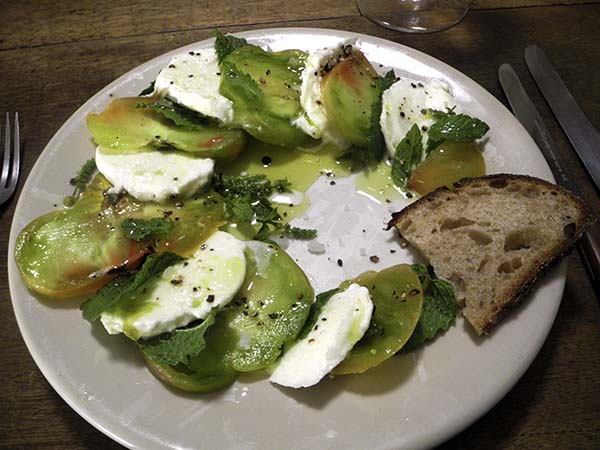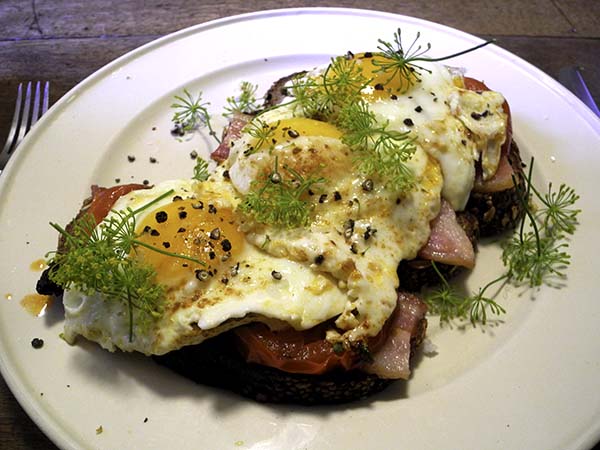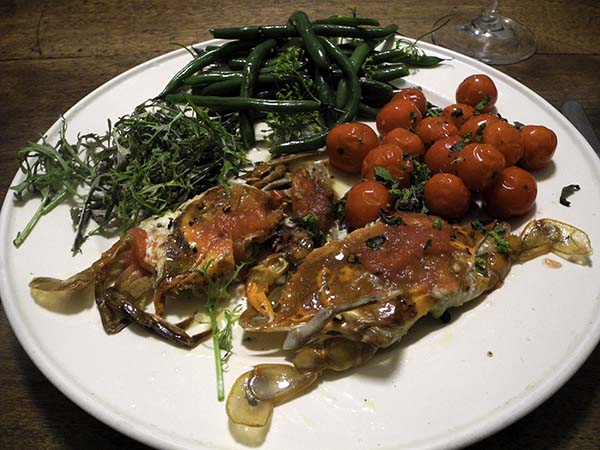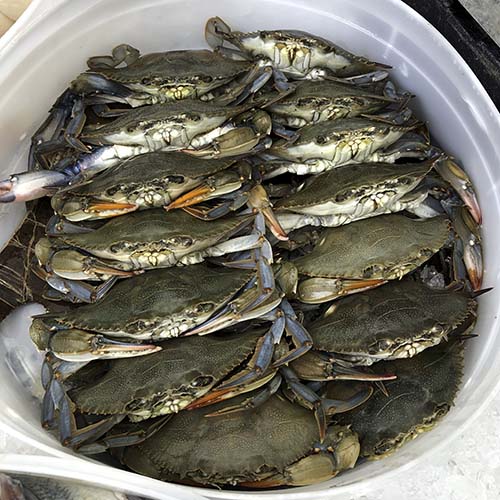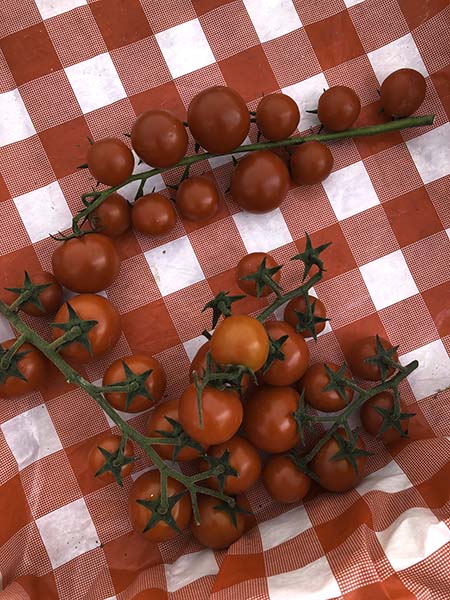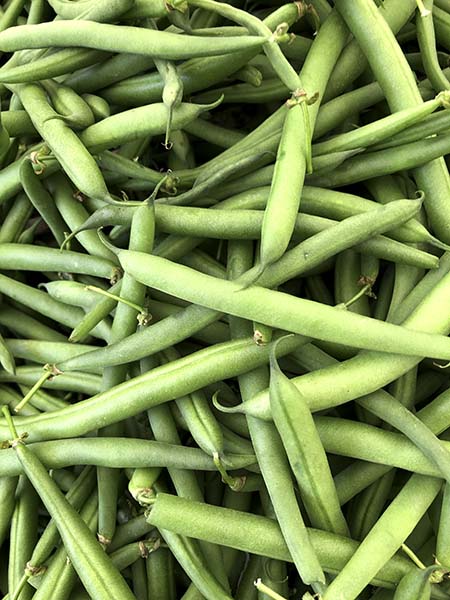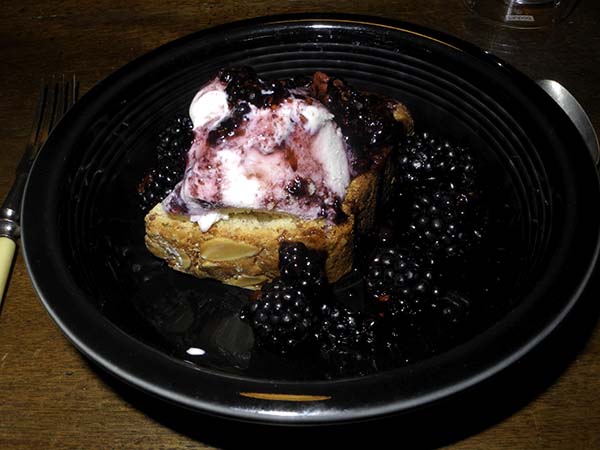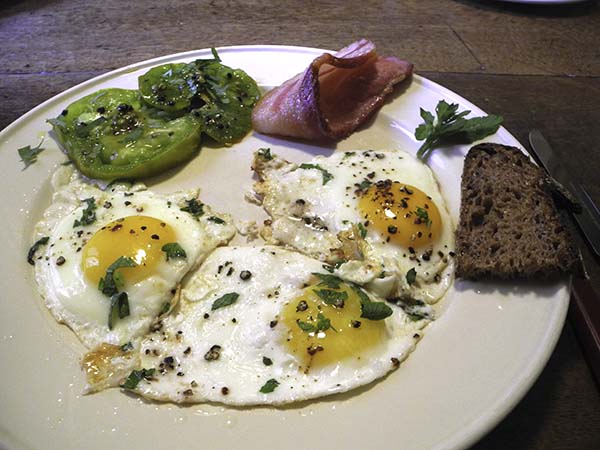
Especially compared to my usual Sunday practice, the herbs and spices were pretty minimal yesterday at lunch, but the epazote was a star on the eggs.
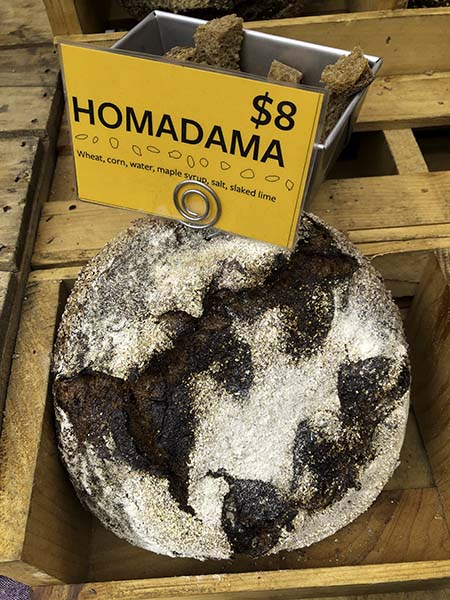
And the new bread was scrumptious.
The meal introduced something else new to our table: A local, ‘European style'(cultured) 86% butterfat butter (that is to say, 12 of the 14 grams in each tablespoon is fat, while almost other American butters have only 11 grams per tablespoon) made by Vermont Creamery, in Websterville, Vermont, from milk provided by the St. Albans Cooperative Creamery in St Albans (and yeah, the packaging is recycled paper).
- four slices of thick bacon from Millport Dairy Farm’s pastured pigs, fried slowly over low heat inside a large enameled cast iron skillet, turning occasionally, removed while they were still juicy and before they had become crisp, set aside on paper toweling to drain, then after adding a little butter to the pan, frying until their whites had barely set 6 very fresh eggs from Millport Dairy Farm pastured chickens, seasoning them with local sea salt and freshly ground black pepper, sprinkling chopped fresh epazote from the Greenmarket’s TransGenerational Farm on top, arranged on the plates with sautéed slices of a medium green heirloom tomato from Quarton Farm, also seasoned with salt and pepper, but in its case garnished with chopped lovage from Keith’s Farm, bacon, eggs, and tomato accompanied by slices, not toasted, of an extraordinary loaf of dark corn and wheat loaf, ‘Homadama’ (wheat, corn, water, maple syrup, salt, slaked lime), with a taste delightfully redolent of a sturdy fresh corn on the cob, from Philadelphia’s Lost Bread Co., which fortunately for New Yorkers, sets up a table in the Union Square Greenmarket on Wednesdays and Fridays
- the music was Leopold Anton Kozeluch’s 1787 oratorial, ‘Moisè In Egitto’, Hermann Max conducting the Rheinische Kantorei and Das Kleine Konzert
